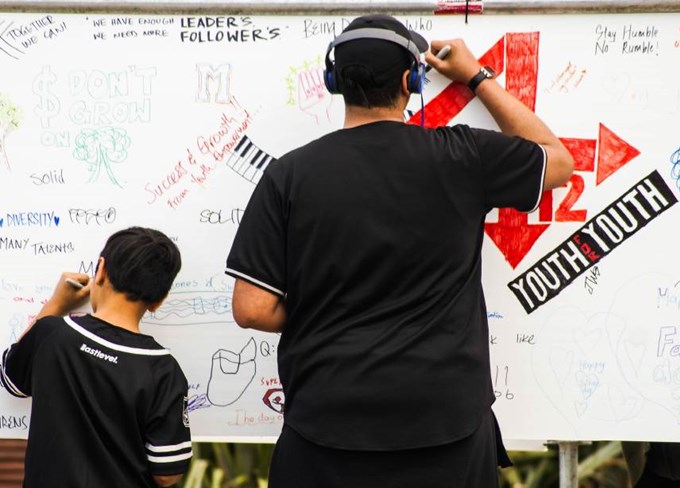Frith Walker, Manager Place Making at Panuku Development Auckland, has humans at the heart of everything she and her team does.
According to Frith, place-making is about investing in humans and creating a sense of welcome. She says locals should be involved in conversations around how a city is shaped.
“There’s been a shift away from the notion ‘build and they will come'. Now we have to think on a human scale. It is important to understand why people come to use a space.”
Considering human scale and the ‘activation’ of space is something of a specialty for Frith and her team.
The Silo Park model
The success of Silo Park is largely due to this people-led approach. When Walker and her team started to focus on the Silo Park site, there were some people who thought that once the Rugby World Cup was over, no one would ever return.
But by taking the right approach, Frith says a certain tone was created that made Silo Park spring to life. Today the waterfront is a beautiful and busy place that has multiple layers of heritage, recreation, art, hospitality and business while remaining a working waterfront with boaties, vessel refurbishments and marine comings and goings a normal part of its everyday.
In 2015 urban regeneration agency Panuku Development Auckland was formed. Frith reflects that the organisation’s name strongly reflects its purpose of regeneration. Sites spread across Tamaki Makaurau have been identified by the organisation as having development potential. One site currently in focus for Frith and her team is Manukau, in South Auckland.
The right people to collaborate with
Frith says that getting the dynamics of team right is crucial for bringing a location like Silo Park to life. Drawing on her background in theatre, she says: “You need the stage manager, the lighting person, the props department – building a team with the right people to collaborate with is important”
Working in Manukau, Frith's team has emerged as Manutahi, a Transform Manukau collective. Members include Auckland Council’s Arts Community and Events (ACE) team, Auckland Art Gallery, Libraries, Auckland War Memorial Museum, The Southern Initiative, alongside non-government organisations, ROOTS, Healthy Families, Makerhood, Cook Island Development Association, and a number of young entrepreneurs from the Southern Initiative.
The partners represent a community interested in working together to discover the true potential of Manukau.
Making a heart
Ole Maiava recently joined Frith’s team as a Place Maker and will work closely with Manutahi on the Manukau project. He is well networked with Pacific communities, having run the Pasifika festival for the past six years and setting up the Rugby World Cup programme in Mangere. He joined Panuku to explore what community means in the heart of Manukau.
“We tell people we’re working in Manukau Square and they ask 'where’s that?' It’s an interesting place, with many different names, but not somewhere that’s seen as the heart,” Maiava says.
While the shopping mall in Manukau is full of people, the public shared space is seen as a thoroughfare. The team runs Manutahi activations in Manukau Square on Saturdays, designed to capture the attention of people who happen to be using the space. There are boards provided for people to write and draw and residents are encouraged to express what they want to see happen in the space.
Learn Do Learn
Every second Saturday the team reviews and builds on what they’ve learned, and encourages its collaborators to participate in activating the space.
Ole says “learn-do-learn” is the guiding mantra for their team. With families starting to see there are things to do and get involved with, the team is beginning to see people return to the space. Young people are also getting involved and so in turn are becoming participants in the transformation of their city space.
Ole concedes that it is a long, slow process but says it is necessary in order to change perceptions, build identity and celebrate community.
“You also discover what you don’t know,” Frith says. She agrees that the process saves you from making costly mistakes that you might have to fix later.
“It‘s not good to affirm what we already think as we don’t know what 20 years from now will look like. This is the opportunity that place making affords us.”
Both Frith and Ole approach place-making with fundamental values regarding the land. They say that when you focus on whenua (land), you do everything differently. While you can research the historical and geological knowledge of an area and understand the physical place, they say that the wairua or spirit of the place is already there.
“You have to start with the ‘story of the place’ the DNA. You need to understand that first and then what it means to be part of that. You really need to start in the soil and work your way up,” Walker says.


